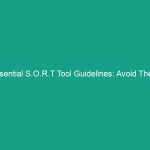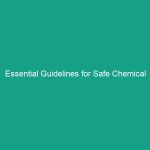Introduction
When we think about construction Safety, we often picture hard hats, Safety Goggles, and high-visibility vests. However, one of the most significant Safety concerns in the construction industry lies in confined spaces in construction. These areas, which are typically not designed for continuous occupancy, present unique Hazards that can lead to serious injuries or fatalities. Understanding and navigating these confined spaces safely is not just a regulatory requirement; it is a crucial aspect of ensuring the health and safety of workers.
This article aims to provide essential guidelines for safely managing confined spaces in construction. We will explore regulatory frameworks, best practices, real-world case studies, common challenges, and future trends in this critical area of health, safety, and Environment (HSE) management. By the end of this article, you will have a comprehensive understanding of how to navigate these potentially dangerous environments effectively.
Understanding Confined Spaces
Before diving into guidelines and practices, it is essential to define what we mean by confined spaces in construction. According to OSHA (Occupational Safety and Health Administration), confined spaces are defined as spaces that are large enough for an employee to enter and perform work, have limited or restricted means for entry and exit, and are not designed for continuous occupancy. Common examples of confined spaces in construction include tanks, silos, storage bins, manholes, and tunnels.
Hazards Associated with Confined Spaces
Working in confined spaces can expose workers to various Hazards, including:
- Lack of Oxygen: Confined spaces can have inadequate oxygen levels, posing a risk of asphyxiation.
- Toxic Atmospheres: Accumulation of hazardous gases, vapors, or dust can lead to poisoning or respiratory issues.
- Engulfment: Workers can be engulfed by materials such as grain, sand, or liquids, leading to suffocation.
- Mechanical Hazards: Equipment used in or near confined spaces can pose additional risks, including entanglement and crushing injuries.
Regulatory Frameworks
Understanding the regulatory landscape surrounding confined spaces in construction is crucial for compliance and safety. In the United States, osha has established Regulations specifically addressing confined spaces under 29 CFR 1926.1200. These regulations stipulate the requirements for identifying, evaluating, and controlling hazards associated with confined spaces.
OSHA Regulations
OSHA’s regulations require that employers:
- Identify confined spaces in the workplace.
- Evaluate the hazards associated with these spaces.
- Implement a permit-required confined space program if hazards are present.
- Provide Training for employees on the hazards and Safe Practices associated with confined spaces.
Other Regulatory Bodies
Besides OSHA, other regulatory bodies may also have requirements regarding confined spaces, depending on the jurisdiction. For example, in Canada, the Canadian Standards Association (CSA) provides guidelines for working in confined spaces, while the European Union has its Directive 89/391/EEC, which outlines health and safety requirements. Thus, it is essential for companies to be aware of local regulations that may apply to their operations.
Best Practices for Navigating Confined Spaces
Implementing Best Practices is essential for ensuring safety when working in confined spaces. Here are some recommended strategies:
Conduct Thorough Risk Assessments
Before any work begins in a confined space, a comprehensive risk assessment should be conducted. This assessment should identify potential hazards and the necessary Control Measures to mitigate risks. Risk assessments should be documented and updated regularly, especially if the conditions in the confined space change.
Implement a Permit System
Employers should implement a permit-required confined space system that outlines the specific requirements for entering and working in confined spaces. This system should include:
- Details of the work to be performed.
- Identification of potential hazards.
- Control measures that must be in place before work begins.
- Emergency Procedures in case of an incident.
Training and Education
One of the most critical components of safety in confined spaces is training. Workers must receive thorough training on the hazards associated with confined spaces, the use of safety equipment, and emergency procedures. Regular refresher courses should also be conducted to keep safety protocols fresh in the minds of employees.
Use of Personal Protective Equipment (PPE)
Personal protective equipment is vital when working in confined spaces. Depending on the identified hazards, PPE may include:
- Respirators for protection against toxic atmospheres.
- Hard hats to protect against falling objects.
- Gloves and protective clothing to guard against chemicals or sharp objects.
- Harnesses and lanyards for Fall Protection, if applicable.
Continuous Monitoring
Continuous monitoring of the atmosphere in confined spaces is essential. This may involve using gas detectors to check for oxygen levels, toxic gases, and flammable substances. Monitoring should occur before entry and continuously while work is being performed to ensure that changing conditions do not pose a threat to workers.
Case Studies: Lessons Learned
Learning from past incidents in confined spaces in construction can provide valuable insights into effective safety practices. Here are a couple of notable case studies that emphasize the importance of Safety Measures:
Case Study 1: The 2015 Construction Site Incident
In 2015, a tragic incident occurred on a construction site where workers were tasked with cleaning a storage tank. Despite having a permit, the atmosphere was not adequately tested for toxic gases before entry. A worker collapsed due to exposure to low oxygen levels and was unable to escape. This incident highlighted the importance of proper risk assessments and continuous atmosphere monitoring.
Case Study 2: The Tunnel Rescue
In another case, workers were conducting Maintenance in a sewer tunnel when a sudden rise in water levels trapped them inside. Emergency responders faced challenges in rescuing the workers due to the confined space and hazardous conditions. This incident underscored the necessity for having well-defined emergency response plans and ensuring that all workers are trained in these procedures.
Common Challenges and Solutions
Even with the Best Practices in place, navigating confined spaces in construction comes with challenges. Here are some common issues and potential solutions:
Challenge 1: Inadequate Training
One of the most significant challenges in ensuring safety in confined spaces is inadequate training. Workers may not fully understand the hazards or the proper procedures to follow. To combat this, employers should establish comprehensive training programs that include practical exercises and simulations to reinforce learning.
Challenge 2: Non-compliance with Regulations
Sometimes, employers may be unaware of or fail to comply with safety regulations. Regular audits and inspections can help identify non-compliance issues. Additionally, fostering a culture of safety where employees feel empowered to speak up about unsafe practices can lead to improved adherence to regulations.
Challenge 3: Equipment Limitations
Another challenge can be the limitations of equipment used in confined spaces. For example, standard gas detectors may not be sufficient for certain environmental conditions. To address this, employers should invest in high-quality, specialized equipment designed for confined space monitoring and ensure that workers are trained in using these tools effectively.
Future Trends in Confined Space Safety
As technology continues to evolve, so do the strategies and tools for enhancing safety in confined spaces in construction. Here are some trends that are shaping the future of confined space safety:
Advancements in Monitoring Technology
Innovations in monitoring technology, such as real-time atmospheric sensors and remote monitoring systems, are becoming more prevalent. These advancements allow for continuous data collection and analysis, improving the ability to detect hazardous conditions before they lead to incidents.
Increased Use of Virtual Reality Training
Virtual reality (VR) training programs are gaining traction in the construction industry. These programs provide immersive experiences that allow workers to practice navigating confined spaces in a safe environment. This hands-on approach can enhance retention and understanding of safety protocols.
Focus on Mental Health and Well-being
As the understanding of Workplace Safety expands, there is a growing emphasis on the mental health and well-being of workers. Ensuring that workers are mentally prepared and not under undue stress can be critical when navigating high-pressure environments such as confined spaces. Implementing support systems and promoting a healthy work-life balance can contribute to overall safety.
Conclusion
Navigating confined spaces in construction poses unique challenges that require a proactive approach to health, safety, and environment management. By adhering to regulatory frameworks, implementing best practices, learning from past incidents, and embracing future trends, we can significantly reduce the risks associated with these dangerous environments.
As you reflect on the guidelines provided in this article, remember that safety is not just a regulatory obligation; it is a moral imperative that protects the lives of workers and their families. Everyone in the construction industry has a role to play in ensuring that confined spaces are navigated safely. Take action today by reviewing your own practices, enhancing training programs, and fostering a culture of safety within your organization.


